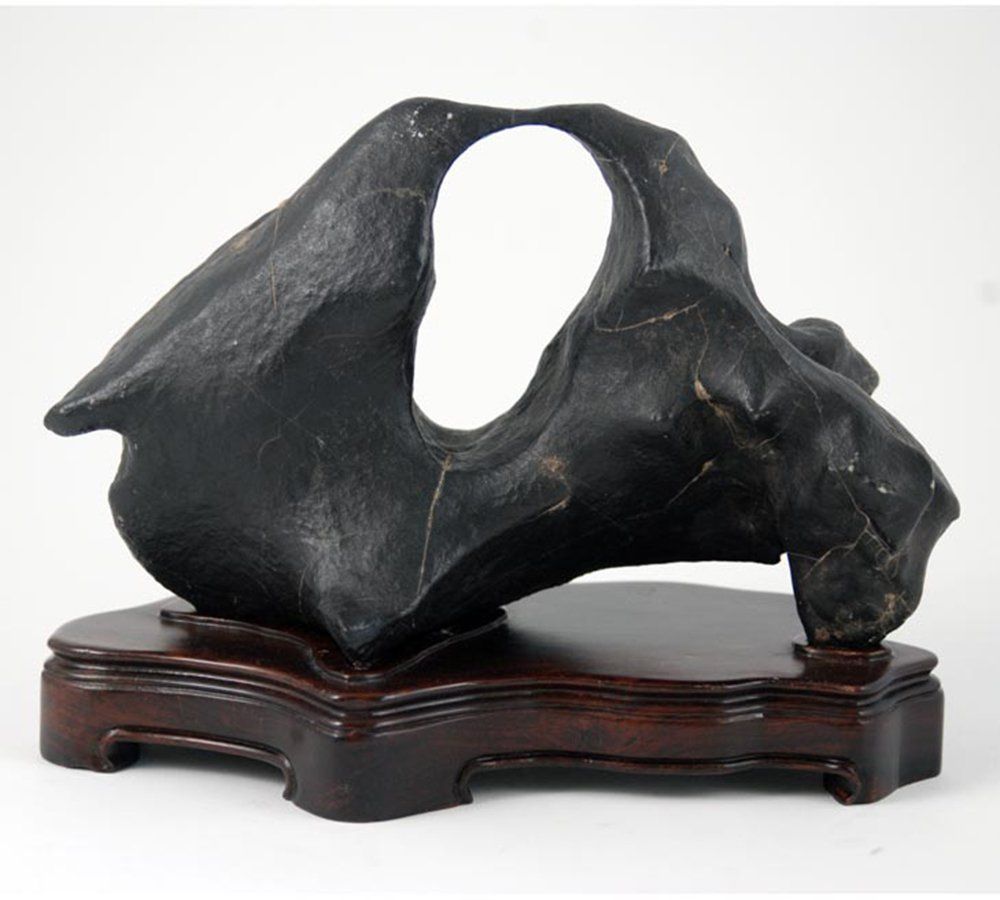Ink Lake Stones, Mohu shiBlack Limestone from Guangxi Province
By Thomas S. Elias, April, 2014
One of the fascinating specialized categories of stone appreciation in China is food Ink Lake stones, also known as Ink stones (Moshi) or Layered Ink stones (Moceng shi), are recent discoveries that quickly became popular because of their appearance and because of their similarities to the long appreciated Lingbi stones. Ink Lake stones are black, smooth, with some white patterns or veins, and often have holes ranging in size from very small to medium. They are typically irregular in shape, often thin, and have some of the qualities of Mi Fu’s ancient criteria for evaluating stones. That is, lo(channels), shou (thinness), tou (holes or openess) and zhou (wrinkles). As a result, many people in Western countries associate these stones with the ancient Taihu and Lingbi stones. Actually, it is sometime hard to distinguish some Mohu shi from small Lingbi. They make very attractive stone displays.
Mohu shi occur in Guangxi Province near Liuzhou. They are found typically buried in sand along river banks. They range in size from just a few centimeters long to large stones weighing over 50 kg (120 pounds). Mohu is composed primarily of limestone and is relatively soft, rating only 3 to 4 on the Mohs scale. Because of this, it can be easily carved and shaped to appear more elegant. Additional holes can be added and the shape is often made more angular. Carbonate rocks such as the Ink Lake stones are described as soft enough to be cut with a knife, which is the reason people see “these man-ground pieces in markets” according to an article in the 1996 book The Essence of the Second China Appreciation Stone Exhibition in Liuzhou. These stones break easily because they are so soft.
Larger ones enjoyed great popularity in the Liuzhou stone exhibitions in the 1980s and early 1990s. The 1992 book The Variety of Marvelous Stones of Liuzhou and the 1994 volume Selected Works of Essential Appreciation Stones of Liuzhou featured numerous Ink Mountain stones. These stones are largely missing from recent books on Liuzhou regional stones, and they are not in demand among serious collectors in China today. As a result, these stones are relatively inexpensive. The group of ink stones accompanying this article was lying on a mat without bases in a Shanghai stone shop, and was for sale for $20 to $30 each, depending upon size. The single Picasso-like figure stone illustrated above, with the pedestal type base, cost $100 in the same shop in 2013. Many of these stones were shipped and sold in Western countries in the late 1990s and 2000s. They are still popular among Western collectors.
There are references in the Chinese literature to Mohu stones with more white patterns that look like blooming white flowers. These stones are called Bai hua Mo shi or White Flower Ink stones and are rarely seen outside of China.


